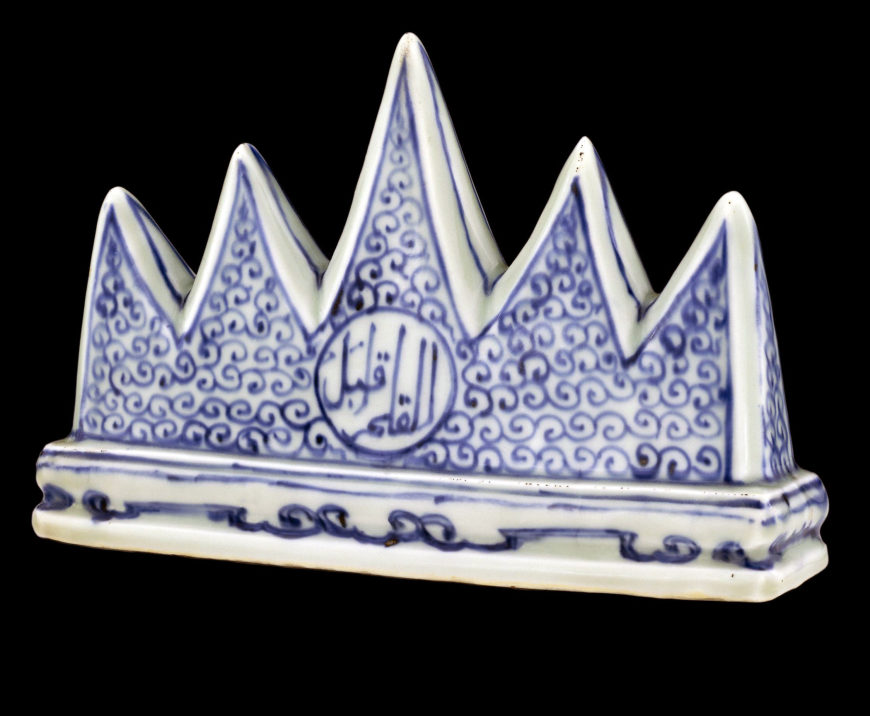
Blue-and-white brushrest with Arabic inscription, Ming dynasty, reign of Zhengde (AD 1506-21), from Jingdezhen, Jiangxi province, southern China, 13.4 cm high (© The Trustees of the British Museum)
Emperor Zhengde was still a child when he ascended the throne. He was strongly influenced by Muslim eunuchs at court and may have converted to Islam. He was known occasionally to wear Arab dress. Many of the porcelain vessels produced during his reign show Islamic influence. Many have Islamic shapes, and Arabic calligraphy was frequently used in the decoration, though not always accurately.
Pieces with Islamic decoration would also have been made specifically by and for the large Muslim population living in China. Persians, Turks, and others were involved in the production and export of ceramics and many other goods, at all levels. Many were extremely wealthy merchants or shipowners.
This brush-rest has a six-character reign mark on the bottom. Zhengde pieces with Arabic calligraphy and six-character or four-character marks were either items for the study of an official or utilitarian vessels such as dishes and bowls. They also incorporate Chinese-style decoration.
© The Trustees of the British Museum
Additional resources:
J. Harrison-Hall, Ming ceramics (London, The British Museum Press, 2001)
S.J. Vainker, Chinese pottery and porcelain (London, The British Museum Press, 1991)

